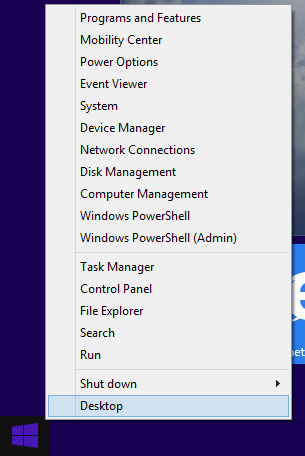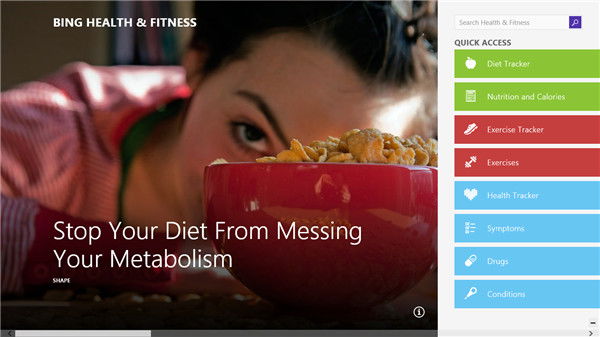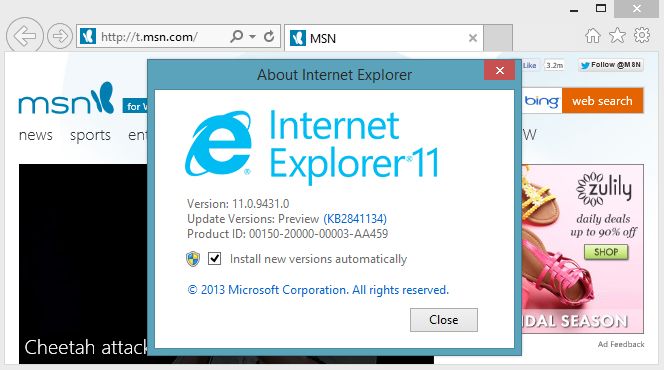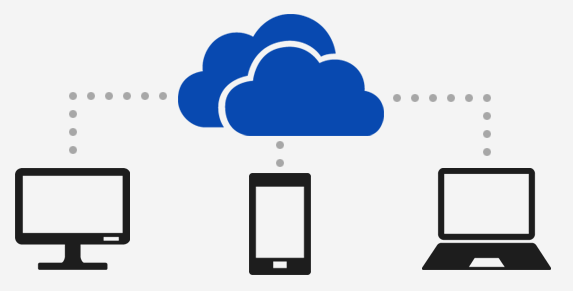There’s been a lot of talk about what the changes in Windows 8.1 have done right for Windows 8. Very few users have talked about why Windows 8.1 actually failed them. While Microsoft has focused on a rapid release cycle similar to how Apple releases updates, they’ve forgotten that Windows 8.1 was meant to upgrade Windows 8 to what it should’ve been upon initial release.
1. Start Button

The long-awaited Windows 8.1 Start Button is the biggest disappointment of the preview. When users asked for the Start Menu back and Microsoft responded, they thought they were getting much more than just a literal Start Button. The Start Button and “Start Menu” in Windows 8.1 is nothing more than a glorified Win + X Menu.
This is not the Start Menu Windows 8 users were looking for. This isn’t even close, and for many looking for a replacement, they’ll stick with the freeware programs like we’ve covered to get the Start Menu back. This is by far the biggest disappointment for users looking forward to the Windows 8.1 update.
2. Upgrading Hassles
Upgrading to the Windows 8.1 preview – not installing it on a partition of virtual machine – is nothing but a frustration for users. When you choose to upgrade to the preview as opposed to installing it separately, you will have to re-install all your apps when the final version rolls out. Since the “upgrade” process works just like you would normally upgrade or install a major update to a OS, without losing data, there’s no reasoning behind why Microsoft would make users go through this trouble.
If you were looking to see what Windows 8.1 was all about, but didn’t understand how to install it on a separate partition or virtual machine, this shuts you out of the preview entirely.
3. Enhanced Apps

Microsoft boasted for months that changes were coming to the Windows Store, as well as apps in Windows 8.1. Sadly, only two enhanced apps rolled out: Health & Fitness and Food & Drink. While they’re comprehensive apps that take advantage of what the modern feel of Windows 8 has to offer, many of the other so-called “enhanced apps” released only work half the time or not at all.

Reading List and Scan are buggy, with the latter only working with wired scanners for the time being. There’s been no hotfixes to these apps to make them work for all users in Windows 8.1.
4. IE 11

IE 11, at least in the Windows 8.1 preview, is just a tweaked IE 10. Very few front end changes came to the new IE 11 which is supposed to highlight how Windows 8 and the Web work together. Most of the features of IE 11 won’t actually be released until Windows 8.1 comes out in its final release. It’ll be up to web sites, blogs and services to change how they do things so that they work within IE 11.
IE 11 seems like a complete waste of energy in the Windows 8.1 preview, since nothing of substance is truly available to users to try out.
5. SkyDrive Integration

Complete SkyDrive integration finally comes to Windows 8 in the 8.1 preview, but the problem is, you can’t turn it off. In fact, you can’t uninstall it at all. For users who utilize other cloud-based services and setups, this can be a hassle to deal with if you accidentally turn on SkyDrive during the Windows 8.1 installation process.
SkyDrive integration should’ve been part of Windows 8 from day one. Why they waited until now is anybody’s guess. While the integration is almost seamless, not being able to uninstall SkyDrive is a drain on system resources and a frustration for those who might accidentally save or drop files in SkyDrive folders.
6. Doesn’t Address Anything Wrong with Windows 8
Overall, Windows 8.1 seems to provide cosmetic changes, app upgrades and additions to the OS that really don’t address the fundamental problems with Windows 8. It seems Windows 8.1 just seeks to “improve” upon what we already know Windows 8 is instead of addressing concerns from users that the PC version is a mere touch screen OS port.
If Microsoft wanted to focus on the mobile market, they should’ve released a mobile-only OS instead of releasing Windows 8 for PCs. There was still room for improvements and changes to Windows 7 to compete on the OS market. Instead, Microsoft once again has proven its vision is more important than its functionality with Windows 8.1.
Conclusion
Chances are when Windows 8.1 arrives in final release form, several bugs will still need to be fixed by individual Windows Updates. Unfortunately, Microsoft’s good intentions may prove to be the downfall of the first major upgrade to Windows 8. Only time will tell if Windows 8.1 can truly live up to the hype as it heads towards official release.
Melissa Popp has been a freelance writer for over a decade. While she primarily has focused on writing about technology, she’s also written about everything from custom mailboxes to health care to just about anything in between. Melissa is the Content Strategist for Trailerbroker.com, the nation’s leading marketplace for trailers for sale, the Social Media Manager for the best roofing Denver company as well as a Writer here at MakeTechEasier. She’s a proud support of the Denver SEO community and a big fan of online radio.
Subscribe to our newsletter!
Our latest tutorials delivered straight to your inbox
Sign up for all newsletters.
By signing up, you agree to our Privacy Policy and European users agree to the data transfer policy. We will not share your data and you can unsubscribe at any time. Subscribe
